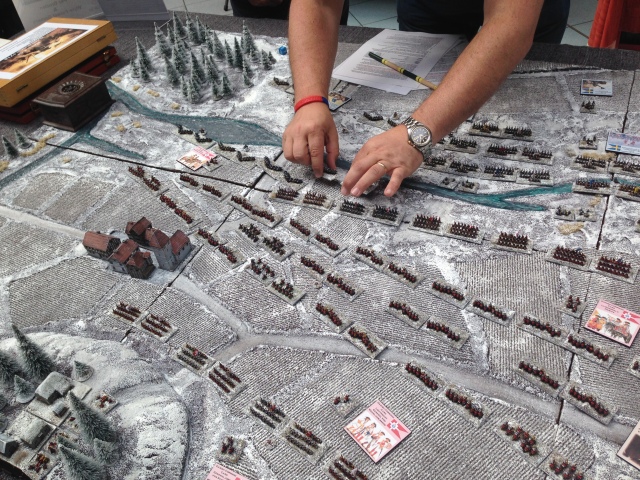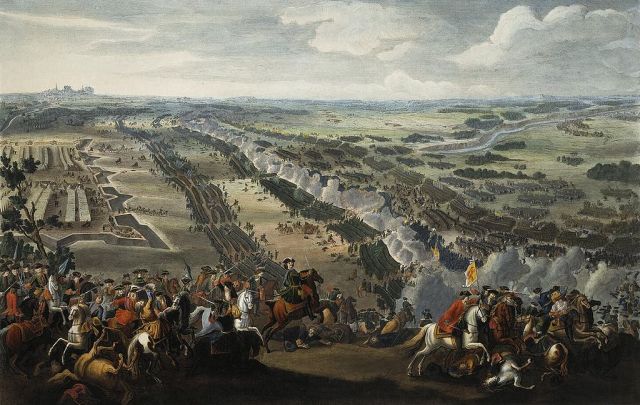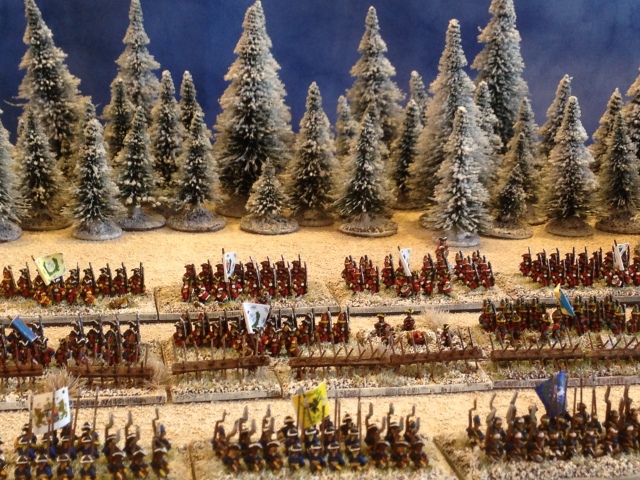
With a little help to my friends
Twilight of the Sun King Rules
Nick Dorrell’s adaptation of the Twilight of the Sun King Rules I talked about in an earlier blog (see here) are now published by the Pike and Shot society. I really enjoy these fast play rules that makes it possible to play large horse and musket battles during late 17th and early 18th century in a reasonable time. Basing is adaptable and the rules works at two levels standard/brigade and regimental scale. In the standard scale a unit represents brigade or its equivalent (2,000 infantry or 1,000 cavalry – so about 4 battalions or 8 squadrons). For the regimental scale a unit equates to 1,000 infantry or 500 cavalry. I play the game in the regimental scale, as I do GNW where the battles tends to be smaller and I have more than enough miniatures to play in this scale, using two 60 by 30mm bases for a unit with a total frontage of 120mm per unit. This is the same basing I use for the Polemos, Maurice and the Might and Reason rules. Further the units can be classified as small or large to allow for the variation in units sizes during the period, e.g. to deal with smaller elite units etc.
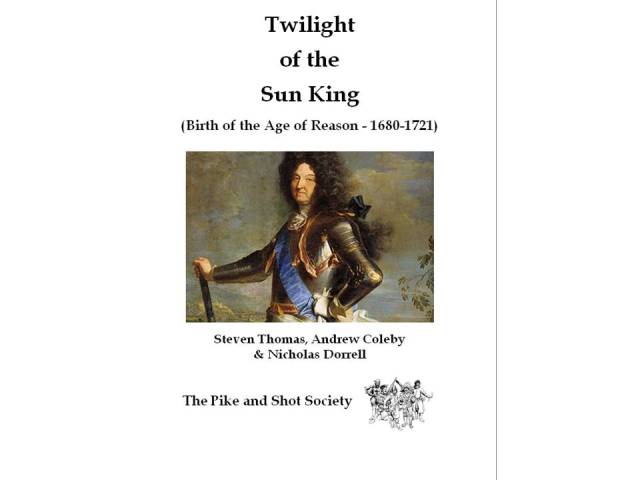
The rules are, to quote Nick from the Design Philosophy notes, “…radical, some would say reductionist, in their conception. It is based on the premise that during this time period, morale rather than numbers of casualties was the key to deciding combat and even the outcome of battles. Many wargames rules pay lip-service to this; however, these rules take the radical step of collapsing shooting and close combat into morale. This dramatically simplifies game play but does so, in the designers’ opinion, without significant loss of historical accuracy.”
The Rules as well as a Scenario book is now available from the Pike and Shot Society and can be obtained from them, http://www.pikeandshotsociety.org/, and other retail outlets.
The scenario book is called Louis XIV at War and features 10 battles – 4 of these are from the War of the Grand Alliance (1688 to 1697) and the other 6 from the War of the Spanish Succession (1701-14). Each scenario includes orders of battles and a map.
A second scenario book is being worked on and will cover the Great Northern War and the Ottoman wars.
There is a Yahoo group:
https://groups.yahoo.com/neo/groups/TwilightSK/info
and you can contact nick via wyreforestgamers@yahoo.co.uk
Collection Calculator
Another friend of mine, Peter Riley, came up with an idea for a Wargames collection calculator when he went to the Newbury show this year. As he walked and talked to gamers at the show it emerged from the many conversations he had is that we don’t know, in detail, what we have in our collections and what they are worth. So to keep a good record of all the elements we have in our growing collections seemed a good idea.
A beta website has been set up here – http://collectioncalculator.com/ . Peter is looking for feedback on what you may think.
I think it is a brilliant idea and could be used to manage your collection, get an idea about its value for a sale or how much to insure your collection for. Try it out and if you like the general idea support it by letting them know how it can be improved.
In a recent Meeples and Miniatures episode the hosts discussed the issue about insuring your stuff when they were speculating what they would do if they lost their collection and got the opportunity to do it all again being given the full value from the insurance company. If you do not know what you have and are not adequately insured then this scenario could end it tears and not in speculation on what you would replace or not.
By the way Peter Riley is the author of a few sets of wargame rules, including the ACW rules Crisis of Allegiance and On They Came as well as the Franco-Prussian Wars rules Kommandant de Battaile and Kommandant de Armee. He is working on a few new sets including a colonial set called A Steady and Deliberate Fire.
Winter is coming
I have presented two Great Northern War battles at the Joy of Six show that took place during the winter season with snow and misery on the battle field – Fraustadt 1706 (with a mention in an earlier post here) and Gadebusch 1712. I really like wintery landscapes having been brought up in Sweden, where minus degrees and snow is a constant for a large part of the year. It engulfs the land and when Spring finally comes it feels like the land has been subjected to some form of annual cleansing.
When I first did the Fraustadt Battle I was hesitant in “winter basing” the armies as I was going to do Klissow where I could have “re-used” a lot of the miniatures especially on the Saxon side. However the contrast between a wintery table and the rectangular zone of summer really annoyed me when I had finished the table and set up the bases on it. So I got on with drybrushing all of the bases with white and then topped them up with some wintery tufts – it was worth the effort. Following the Gadebusch battle I now have fully sized GNW armies for the Swedes, Saxons and the Danes ready to rumble any time of the year.
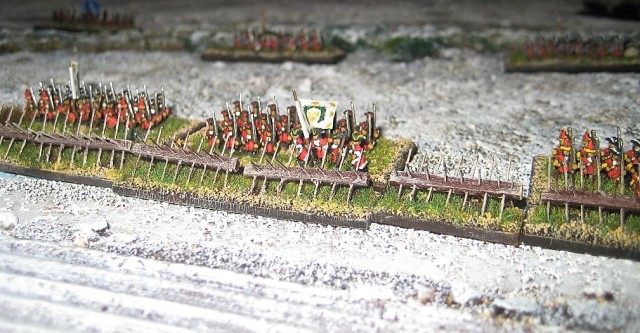
So apart from the snow ventures above I have a passion, or perhaps compulsion, for the Winter War 1939-40. It is a very interesting conflict and I went with the Baker Company Winter War 28mm Kickstarter a few years back – the project did not really go as intended and I only got part of what I expected. Instead I decided to go for it in 15mm and have recently completed enough to start playing some Chain of Command with a Platoon with some options for each side (I will do a future posting for the Finnish and the Russian/Sovietic platoon). I am also keen to try out the IABSM (I ain’t been shot Mum) rules from Company Sized actions. Both these rules are from the eminent makers of rules at Too Fat Lardies (Chain of Command here and IABSM here).
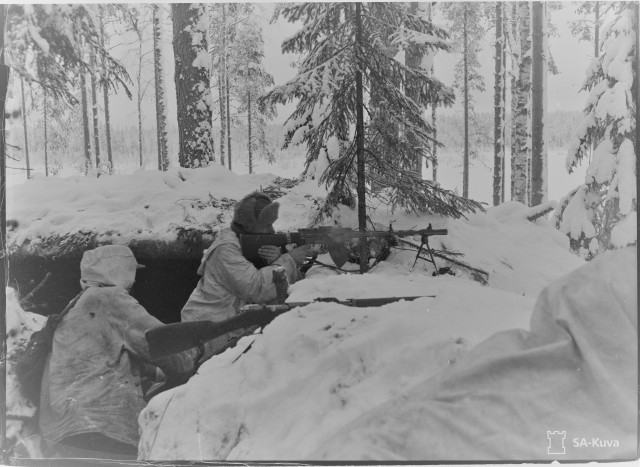
So for IABSM I have a few options, (i) expand the 15mm platoons for Chain of Command, (ii) use the Pithead 10mm ones I bought a few years back or (iii) try out the 6mm Finnish from Heroics and Ros.
I bought a few test strips from Heroics and Ros from their Finnish Range and also a strip from the Snow/Ski Troopers. I decided to paint these and base them to see how they would look like and put them on a 65 by 65mm base. I am pleased how they came out and I think it will work well for the IABSM rules (although I would probably use 25mm bases) – I hope you agree (Note one of the pictures show some 15mm miniatures from the Chain of Command Finns). I used some snow flock mixed with Matte Mod Podge for the basing, it looks slightly better for real than in the photos. I am going to do a winter company for the Finns, Russians and Germans as they did some combined operations with the Finns. With this scale it should not take very long to complete a company worth of miniatures. It will look fantastic.

I think I have to order some more from Heroics and Ros. For the Pithead stuff, well I have no problem with it staying on the mountain for now! The 28mm Baker Company stuff I did get I will probably get rid off.
Not really Winter but cold as death
About 2 months ago I wrote about some new 6mm miniatures from Microworld Games (see here). I did not buy the Landsknechts this time but I bought the new duelists and peasants as well as a large number of zombies and ghouls for another little project I am working on (I am doing the Saga Revenants faction in 6mm when I have time). Anyway, I got them this week as it was a pre-order, and I really liked the look of the duelists and the peasants – some of these will be used for my Sharp Practice games. I could not resist painting up a little vignette on a 60 by 60mm base with some zombies controlled by a witch/necromancer (from Perfect Six) attacking three witch hunters (the duelists) supported by a few farmers. This is a homage to a roleplaying scenario I played when I was a kid (well at least a younger kid) and actually a Christmas present to a very dear friend.
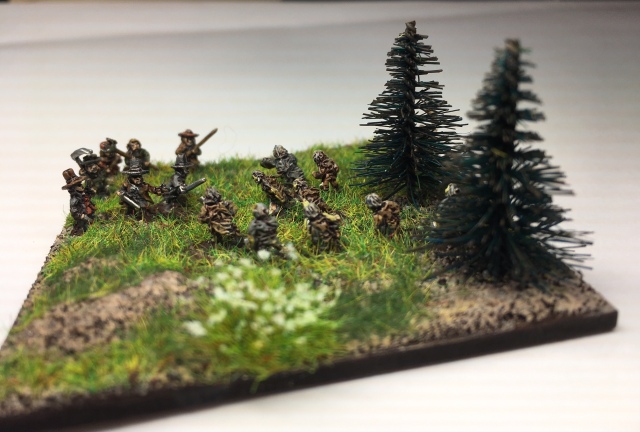
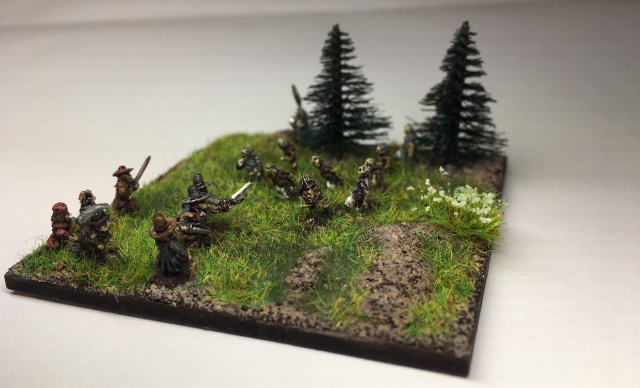
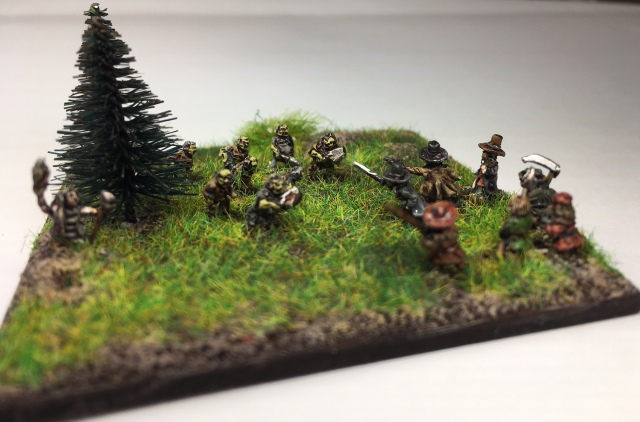
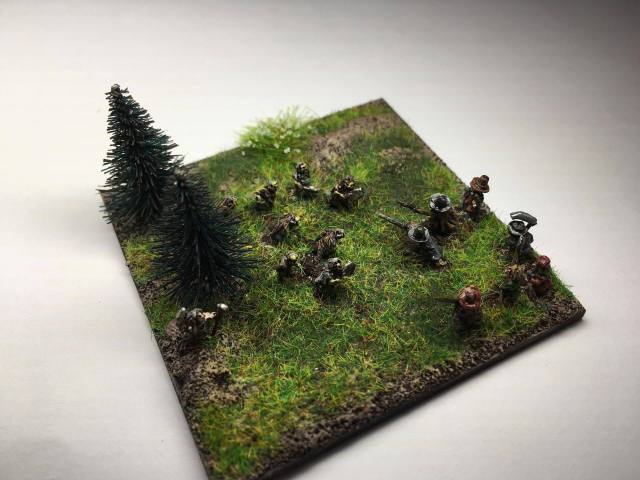
Ok next time I will get on with some Great Northern War stuff and the Towards Moscow Project / Keep on toysoldiering!
